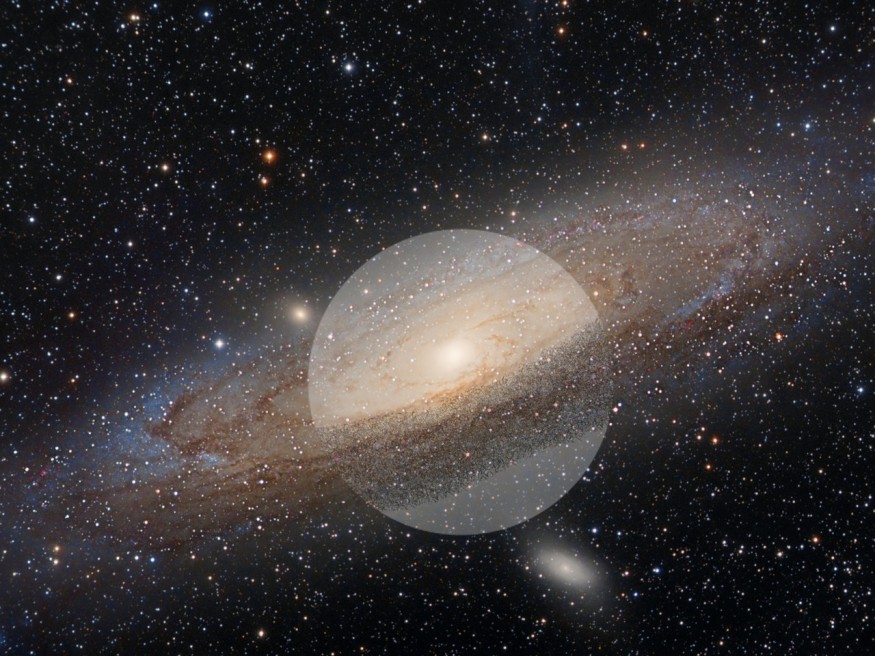Saturn's tilt has long been suspected to be caused by gravitational interactions with Neptune. A new modeling study, however, revealed that Saturn has since escaped Neptune's pull due to a missing moon.

Chrysalis: Saturn's Lost Moon
According to an MIT study published in the journal Science, Saturn once had at least one more satellite, which they named Chrysalis. According to Sci Tech Daily, the Ringed Planet currently has 83 moons.
The researchers hypothesized that Chrysalis orbited Saturn for billions of years, pulling and tugging on the planet in such a way that its tilt or obliquity remained in resonance with Neptune.
The team hypothesized that the missing moon became unstable around 160 million years ago and came too close to its planet in a grazing encounter, tearing the satellite apart. Its loss was enough to free Saturn from Neptune's grasp and leave it with its current tilt.
The astronomers also speculated that the moon's fragments remained in orbit. Then it shattered into small icy chunks, forming the planet's signature rings.
Scientists Believed That Saturn's Chrysalis Solved the Mysteries of the Ringed Planet
Astronomers believed they had solved two long-standing mysteries about the planet, including its tilt and the age of its ring. The ring was previously estimated to be about 100 million years old, making it much younger than the planet itself.
Jack Wisdom, the study's lead author said, "Just like a butterfly's chrysalis, this satellite was long dormant and suddenly became active, and the rings emerged."
Wisdom and his team used Cassini's Grand Finale observations to calculate the planet's moment of inertia. The Grand Finale was able to get close enough to the planet to precisely map its gravitational field, which can be used to calculate the mass distribution on the planet.
They then modeled Saturn's interior and identified a mass distribution that corresponded to the gravitational field observed by Cassini. The newly discovered moment of inertia placed Saturn close to, but just outside, the resonance with Neptune.
The researchers looked for ways to get Saturn out of Neptune's resonance. First, the team ran simulations of Saturn's and its moons' orbital dynamics backward in time to see if any natural instabilities among the planet's existing satellites could have influenced the planet's tilt. This search yielded no results.
ALSO READ : Saturn Rings Become Visible From The Earth
Reexamining Mathematical Equation To Support Hypothesis
The scientists reexamined the mathematical equations that describe a planet's precession or how its axis of rotation changes over time. All of the satellites contribute to one term in this equation. The team reasoned that removing one satellite from this total could affect the planet's precession.
The scientists reexamined the mathematical equations that describe a planet's precession, or how its axis of rotation changes over time. All of the satellites contribute to one term in this equation. The team reasoned that removing one satellite from this total could affect the planet's precession.
They conclude that Saturn's current tilt is the result of the resonance with Neptune and that the loss of Chrysalis, a satellite roughly the size of Saturn's third-largest moon Iapetus, allowed it to escape the resonance.
Chrysalis entered a chaotic orbital zone between 200 and 100 million years ago, had several close encounters with Iapetus and Titan, and eventually came too close to Saturn, in a grazing encounter that ripped the satellite to bits, leaving a small fraction to circle the planet as a debris-strewn ring.
They discovered that the loss of Chrysalis explains not only Saturn's precession and current tilt, but also the late formation of its spectacular rings.
RELATED ARTICLE: Moon-Saturn Conjunction May 2022: What Are the Upcoming Celestial Sky Events? How and When to Watch Them
Check out more news and information on Space in Science Times.
© 2025 ScienceTimes.com All rights reserved. Do not reproduce without permission. The window to the world of Science Times.











